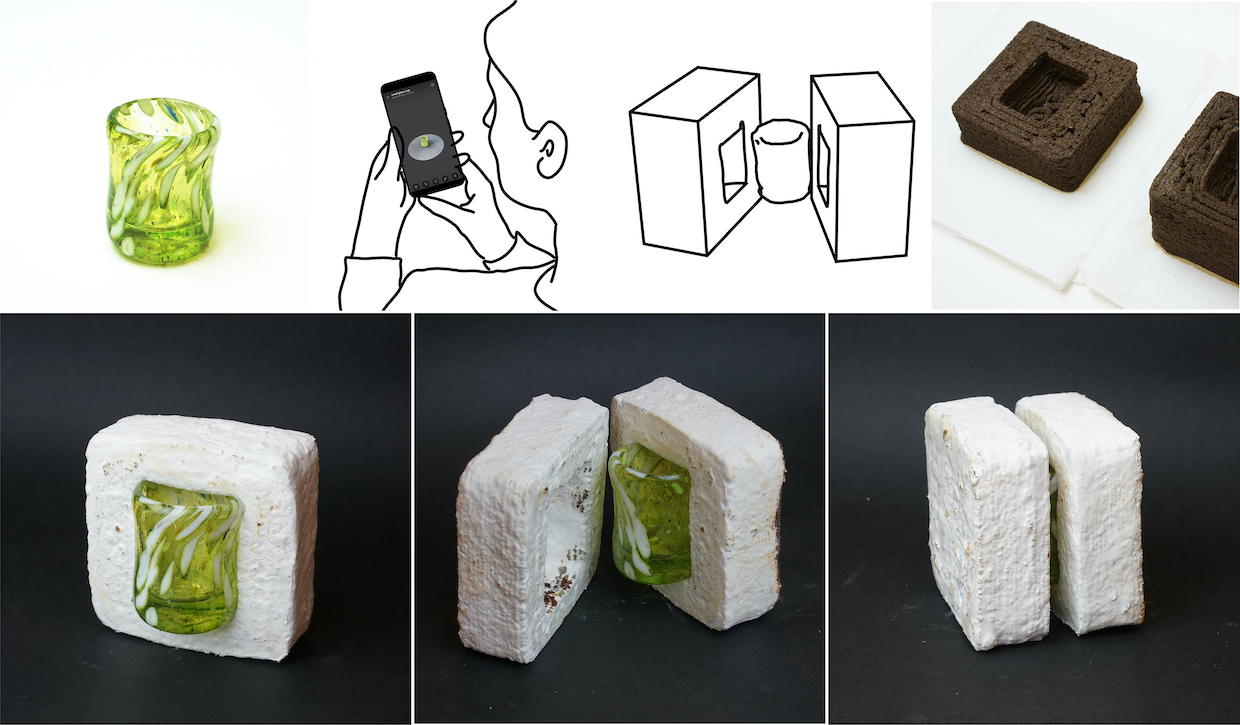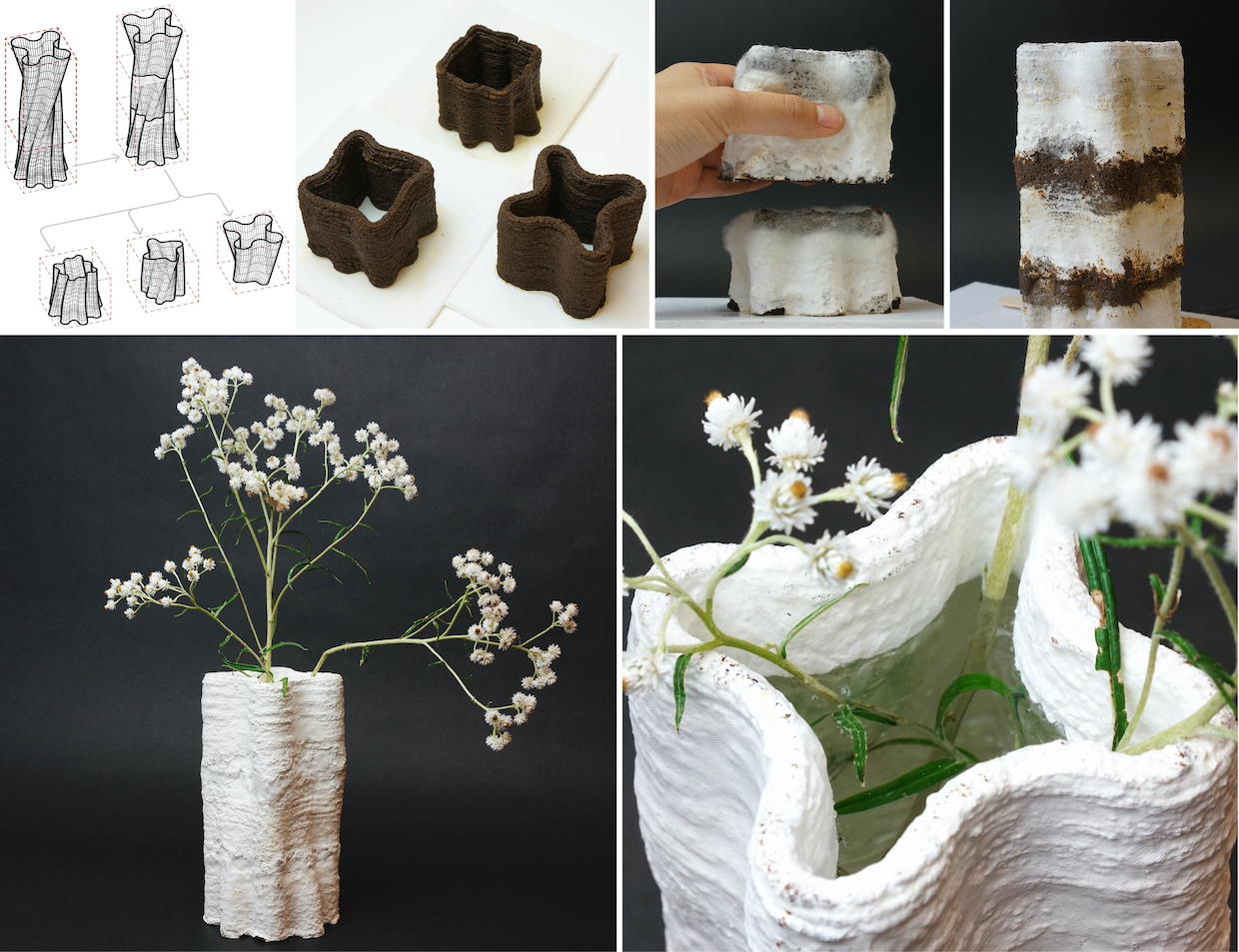
Illustrating the creation process of a two-part packaging material designed for safeguarding a delicate glass cup. Image shared via Creative Commons licence CC BY 4.0. See the original image here.
A research team at the University of Washington recently developed a 3D printing method that could transform post-consumer coffee waste into useful, yet compostable, materials similar to custom-shaped polystyrene foam.
The researchers combined spent coffee grounds with mycelium — whitish, web- and root-like stuff from fungi — to produce small objects that are relatively sturdy, water-resistant and biodegradable. The latter property is a notable contrast to expanded polystyrene foam, which may break down into microplastics over hundreds of thousands of years.
The researchers said such innovations could help reduce reliance on petroleum-based plastics and other finite resources in the field of 3D printing.
“We argue that current research has only scratched the surface of what is possible with living materials,” the authors of the study, published in the journal 3D Printing and Additive Manufacturing, wrote. “This article demonstrates that 3D printing with fungi is one promising direction.”
The study involved the creation of a mycelium-inoculated paste, called “Mycofluid,” made with used coffee grounds, brown rice flour, xanthan gum and water. The paste was then printed in layers with a custom, open source “Fungibot” print head, removing the need for plastic molds.
The research team noted that coffee grounds, as a food waste, were particularly well suited for the project, given their high-volume availability, their relative sterility due to high-temperature brewing, and their ability to support fungal growth.
Once printed, the structures were left in an incubator-like environment for about 10 days, allowing the mycelium to grow and spread, providing the protective “skin.”

Illustration of a tall, freeform vase that was 3D printed as three equal-height pieces. The vase pieces were stacked and fused together by mycelium, resulting in a fully colonized, single-piece structure with added waterproofing properties. Image shared via Creative Commons licence CC BY 4.0. See the original image here.
The team produced numerous objects through the process, including packaging for a small glass, pieces of a vase, two halves of a small statue and a two-piece coffin the size of a butterfly.
While the market for biodegradable butterfly coffins may be limited, the research team noted that the innovation could have significant practical implications, particularly for people making objects on a small scale.
“We’re especially interested in creating systems for people like small businesses owners producing small-batch products — for example, small, delicate glassware that needs resilient packaging to ship,” lead author Danli Luo said in a news announcement from the university. “So we’ve been working on new material recipes that can replace things like Styrofoam with something more sustainable and that can be easily customized for small-scale production.”
The full study, “3D-Printed Mycelium Biocomposites: Method for 3D Printing and Growing Fungi-Based Composites,” is available here.
Comments? Questions? News to share? Contact DCN’s editors here. For all the latest coffee industry news, subscribe to the DCN newsletter.






Comment